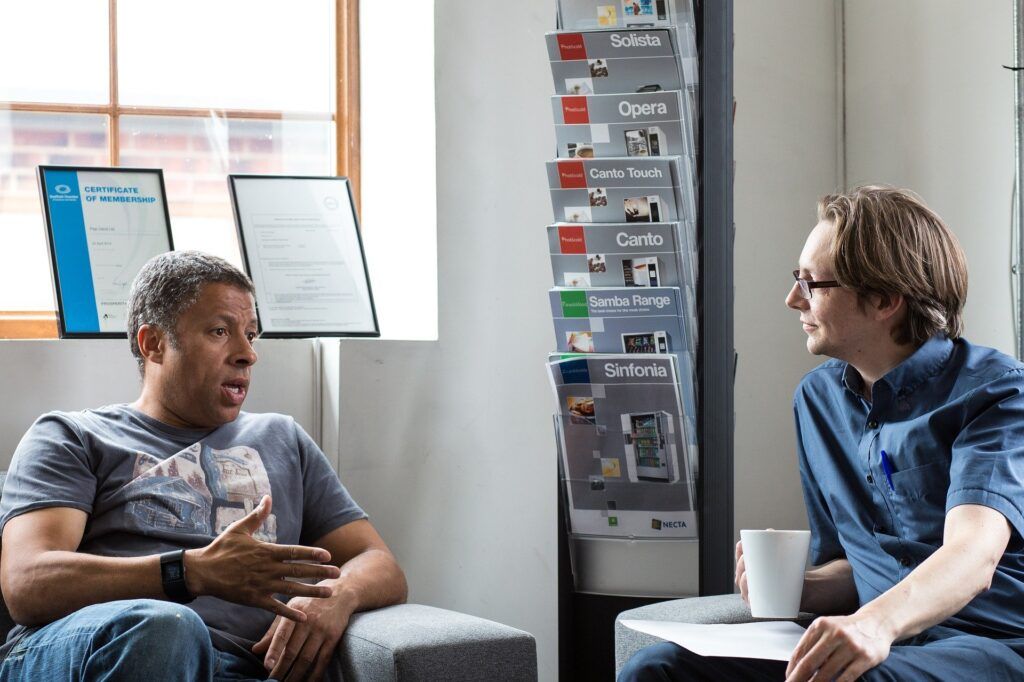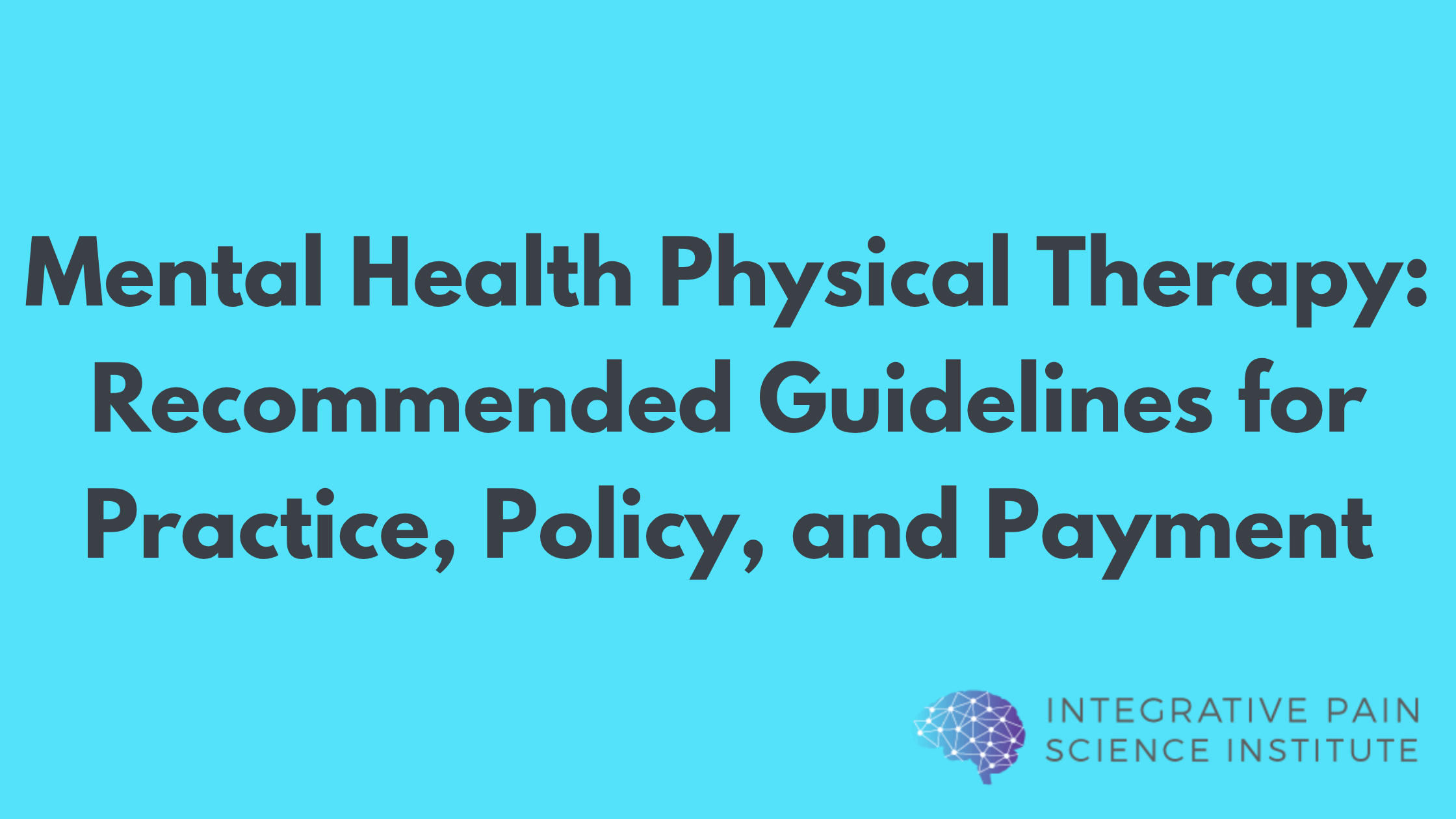Motivational Interviewing and Pain Neuroscience Education are two approaches that have been shown to be useful when treating patients with chronic pain (1,2). While research supports both treatment strategies individually, there is currently no research exploring the potential benefits of integrating both motivational interviewing and pain neuroscience education into the management and treatment of chronic pain (3).
It is important to recognize that neither motivational interviewing nor pain neuroscience education are intended to be beneficial as stand-alone treatments and should be integrated into an individualized plan of care (3, 4).To understand how they are able to complement one another it is first important to review how they differ in terms of techniques, goals, and outcomes.
| MOTIVATIONAL INTERVIEWING | PAIN NEUROSCIENCE EDUCATION |
| Patient-centered communication approach using open-ended questions encouraging patients to arrive at decisive conclusions (3) | Enhances patient’s knowledge about pain, shaping their beliefs and awareness of psychosocial factors that may be associated with their pain through stories, metaphors, and images (3) |
| Goal: encourage motivation and intrinsic desire to ultimately lead to behavior change (3) | Goal: encourage adaptive pain coping strategies by decreasing perceived threat of pain and increasing their knowledge about pain (1) |
| Outcomes: Improvement in– Cognitive and behavioral awareness– Adherence to treatment principles (2) | Outcomes: Improvement in– Kinesiophobia– Pain catastrophizing (5) |
In order for a patient to change their behavior the following three elements are essential (4):
1. Knowledge
2. Motivation
3. Opportunity
Pain neuroscience education can be used to primarily address knowledge, motivational interviewing can be utilized concerning motivation and opportunity by enhancing intrinsic desire and identifying potential opportunities for behavior change. Patients are more likely to develop increased intrinsic motivation to change their behavior if they better understand their pain and the possible factors that influence it. Together, pain neuroscience education and motivational interviewing can complement one another and be a vital part of an overall comprehensive approach to treatment of chronic pain (3).
Dr. Tatta’s simple and effective pain assessment tools. Quickly and easily assess pain so you can develop actionable solutions in less time.
HOW TO INTEGRATE MOTIVATIONAL INTERVIEWING AND PAIN NEUROSCIENCE EDUCATION
When first addressing knowledge and introducing pain neuroscience education to a patient, using the motivational interviewing principle of establishing therapeutic alliance and asking if a patient is open to learning more about their pain can help to establish trust and engage the patient (3). Using open-ended questions can help the therapist gain further insight to a patient’s current knowledge and beliefs about their pain and drive what aspects of pain neuroscience education would be most beneficial at that time. Motivational interviewing can help assess where a patient currently is in terms of stages of behavior change and their potential readiness to begin implementing changes. To explore opportunity for behavior change, motivational interviewing techniques can help patients establish a plan moving forward and identify concrete, realistic goals which is an important component of pain neuroscience education (4).

Self-management is currently at the center of the recommended approach for treating chronic pain (6), but will be inefficient if patients do not implement the changes in their behavior that facilitate self-management strategies. Using pain neuroscience education and motivational interviewing helps to shift the responsibility onto the patient and encourage them to take an active role in their health. Additionally, tailoring pain neuroscience education to the patient and allowing them to come to their own conclusions through motivational interviewing will help to facilitate individualized treatment which is an essential component of success in physical therapy.

Shelby McClure is a third year Doctorate of Physical Therapy student at Augusta University in Augusta, Georgia and will be graduating in May of 2020. She completed her undergraduate education at Auburn University in Alabama where she earned a B.S. in Fitness, Conditioning, and Performance in addition to a B.S. in Nutrition and Wellness.
Shelby began dancing at a young age which helped to shape her initial interest in health. During college, she worked as a dance instructor as well as a group fitness instructor, which eventually led her to pursue a career in physical therapy.
Throughout her time at Augusta University and subsequent clinical rotations, Shelby realized her passion for pain science and psychologically informed physical therapy. Shelby is currently completing a 4-week elective with the Integrative Pain Science Institute prior to her graduation.
Shelby is from the Atlanta, Georgia area where she currently resides with her husband of 2 years.
To learn more about Shelby, visit her LinkedIn.
REFERENCES:
- Louw A, Zimney K, Puentedura EJ, Diener I. The efficacy of pain neuroscience education on musculoskeletal pain: a systematic review of the literature. Physiother Theory Pract. 2016; 32: 332-55
- Alperstein D, Sharpe L. The efficacy of motivational interviewing in adults with chronic pain: a meta-analysis and systematic review. J Pain. 2016; 17:393-403.
- Nijs J, Wijma AJ, Willaert W, et al. Integrating Motivational Interviewing in Pain Neuroscience Education for People With Chronic Pain: A Practical Guide for Clinicians [published online ahead of print, 2020 Jan 29]. Phys Ther. 2020;pzaa021. doi:10.1093/ptj/pzaa021
- Louw, A., Schmidt, S., Puentedura, E. and Zimney, K., 2018. Pain Neuroscience Education. 2nd ed. Minneapolis, MN: OPTP
- Watson JA, Ryan CG, Cooper L, et al. Pain neuroscience education for adults with chronic musculoskeletal pain: a mixed-methods systematic review and meta-analysis. J Pain.
- Edwards M, Wood F, Davies M, Edwards A. The development of health literacy in patients with a long-term health condition: the health literacy pathwaymodel. BMC Public



